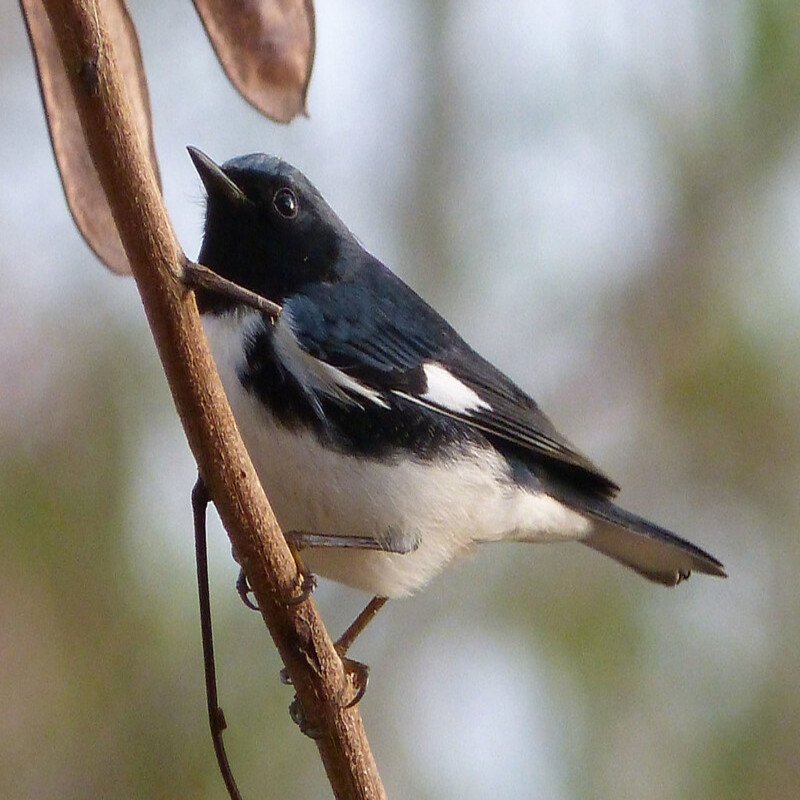The black-throated blue warbler (Setophaga caerulescens) is a tiny passerine bird of the New World warbler family. The black-throated blue warbler is sexually dimorphic; the adult male has a black face and cheeks, deep blue upperparts, and white underparts, while the adult female is olive-brown above and bright yellow below.
Quick Overview: Setophaga Caerulescens – Black-Throated Blue Warbler
Body size: Around 5.25 in (13 cm) and a weight of 11 g (0.4 oz)
Main colors: Blue, Black, White, Olive-Brown
Range: Eastern United States
Migratory Bird: Yes
Best time of the year to see in the U.S.: March, April, May, September, October, November
Conservation Status: Least Concern
Black-Throated Blue Warbler Description
Small warbler that is the most dramatically sexually dimorphic of all wood warblers. The Male has dark blue upperparts, a black neck, and a mask. White underparts with black sides and white wing patch at base of primaries. Bill, legs, and feet are black. The female is olive-brown.

Size
These birds have a length of 5.25 in (13 cm) and a weight of 11 g (0.4 oz). Their wings could range from 18-19 in (7-7.5 cm).
Feeding
Black-throated blue warblers eat mainly insects, however, they will eat some fruits throughout the winter. They eat mostly beetles, caterpillars, butterflies and moths, flies, bugs, and spiders. Black-throated blue warblers forage by themselves among leaves and on branches.
Habitat
Black-throated blue warblers are found largely in areas of undisturbed deciduous and mixed-deciduous woods in their nesting range. They like woods with a deep, shrubby understory. In winter they are found in tropical forests, including secondary forest, plantations, and disturbed forest remnants.
Behavior
Black-throated blue warblers flit among foliage and even hop on the ground. They are migratory and active during the day. They spend much of their time foraging, except when females are incubating eggs or brooding young when they spend 75 percent of their time incubating or brooding.
Setophaga Caerulescens Scientific Classification
- Kingdom: Animalia
- Phylum: Chordata
- Class: Aves
- Order: Passeriformes
- Family: Parulidae
- Genus: Setophaga
- Species: Setophaga caerulescens
Best time of the year to see
In the United States, the best time of year to see these birds are during the Spring season (March-May) and during the Autumn season (September – November).
Distribution of the Black-Throated Blue Warbler in the USA
Breeds from Ontario east to Quebec and Nova Scotia, south to Minnesota, Great Lakes, and Connecticut, and in the mountains to northern Georgia. Spends winters in the Greater Antilles.
The Black-Throated Blue Warbler can be found in the following states in the United States – Alabama, Alaska, Arizona, Arkansas, California, Connecticut, Delaware, Florida, Hawaii, Illinois, Indiana, Iowa, Kentucky, Louisiana, Maine, Maryland, Massachusetts, Michigan, Mississippi, Missouri, New Hampshire, New Jersey, New York, North Carolina, Ohio, Oregon, Pennsylvania, Rhode Island, South Carolina, Tennessee, Texas, Vermont, Virginia, Washington, West Virginia, and Wisconsin.
